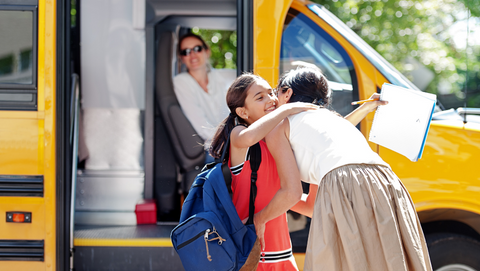Please give us feedback on one of our weekly question and answer articles. We value your time so the evaluation will only take 3 minutes or less, we promise!
Take the Survey »Navigating Back to School as a Family
By Kari Ure, Extension Assistant Professor
The first day of school seems to come more quickly each year. It can be difficult to see summer end and get back into the day-to-day responsibilities of classes and homework. Often parents need as many back to school tips as students.
There are many common tips for going back to school. Examples include establishing schedule routines, limiting screen time, good nutrition, limiting distractions during homework time, and consistently getting enough sleep.
Here are four additional points to remember as the school year gets going:
- Give children a safe place for First Attempts in Learning (FAIL) opportunities. Nurturing confidence in children takes consistent effort. Focus on a growth mindset (Pay & Schmutz, 2022). Every parent wants their child to succeed and failing is part of the process. Allow children to feel like they can share both success and failure. Helping children understanding healthy attitudes towards failure is one of the best ways to help them succeed. Modeling as parents is crucial to teach learning from failing and persisting to reach goals.
- Don’t forget the importance of play time and free time for children. Unstructured time to allow them to explore and choose how to use their time gives children important down time to recharge (Yogman et al., 2018). Time to be creative, imagine, and play is important in their learning. Puzzles and games are important for fun diversions and also develop logic skills. Taking time to play is important for parents too!
- Find ways to talk to children, but most importantly find time and settings to listen. This might be establishing traditions for special meals or snacks for times to talk. One on one time with each child is important in giving them time to share. Grabbing a special snack to celebrate accomplishments. Creating a time when children know they can talk without judgement or direction is important in allowing children to open up. Art activities can provide another way to express thoughts and feelings. Trusted adults such as grandparents and other extended family are also important relationships for children to have for support.
- Involve the whole family in the learning process. Get creative in learning activities. If a younger child needs to read a book for school, add in a family book club with special activities or snacks and let the child lead the discussion. If a child is learning times tables, presidents, or states and capitals, make family games out of memorizing the material.
Consistent effort in supporting children in learning will strengthen family relationships and can increase the likelihood of a smooth transition in getting back into the school routine.
To view the presentation about Growth Mindset visit: https://www.youtube.com/watch?v=hAKu70XfA0Y
For more information about questions related to going back to school visit: https://www.pbs.org/parents/back-to-school
References
Pay, C., & Schmutz, A. (2022) Developing a growth mindset: Creating opportunities to navigate through change [Webinar]. Utah State University Extension Create Better Health Training. https://www.youtube.com/watch?v=hAKu70XfA0Y
Weidner, B. N., & Skolar, E. (2021). Teaching for a FAIL (first attempt in learning) in the ensemble classroom. Music Educators Journal, 108(2), 23–29. https://doi-org.dist.lib.usu.edu/10.1177/00274321211060332
Yogman, M., Garner, A., Hutchinson, J., Hirsh-Pasek, K., & Michnick Golinkoff, R. (2018). The power of play: A pediatric role in enhancing development in young children. Pediatrics, 142(3), 1–16. https://doi-org.dist.lib.usu.edu/10.1542/peds.2018-2058

